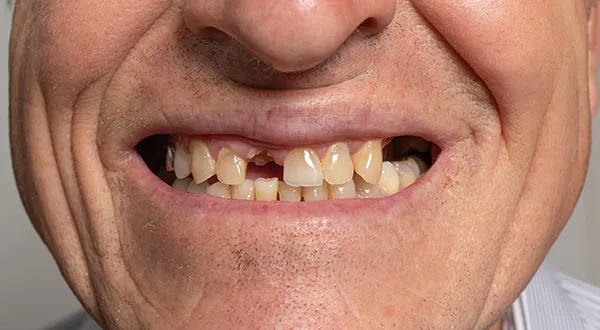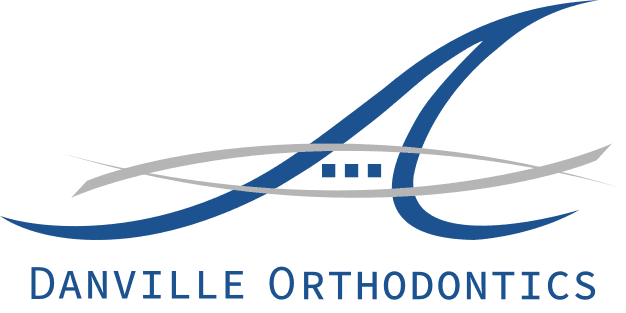Orthodontic Issues in Adulthood
Orthodontic issues are not exclusive to adolescence; they can persist or even develop in adulthood. While braces and orthodontic treatment are often associated with teenagers, many adults also seek solutions to correct misaligned teeth, bite problems, and other concerns. In this blog post, we'll explore the various orthodontic issues that adults may face, the reasons behind their occurrence, and the importance of addressing them for optimal oral health and overall well-being. Whether you're considering orthodontic treatment for yourself or simply curious about the topic, read on to discover more about orthodontic issues in adulthood.
Common Orthodontic Problems Experienced by Adults
- Crooked or Misaligned Teeth:
Many adults experience issues with teeth alignment, which can affect both the appearance and function of their smile. Crooked or misaligned teeth can make cleaning difficult, increasing the risk of gum disease.
- Overcrowding:
When there is insufficient space for teeth to fit in the jaw, overcrowding occurs. Overcrowding makes it challenging to maintain good dental hygiene and potentially causing discomfort or pain.
- Underbite or Overbite:
An underbite occurs when the lower teeth protrude more onward than the upper teeth. Meanwhile, when the upper teeth overlap, the lower teeth overbite occurs. Both conditions can impact the bite's function and aesthetics and may lead to jaw pain or difficulty chewing.
- Crossbite:
When the upper teeth sit inward on the lower teeth, causing uneven wear on the teeth, jaw discomfort, and difficulty chewing, it is called a crossbite.
- Open Bite:
When the upper and lower teeth do not intersect while closing the jaw, a gap between the front teeth occurs, called an open bite. This condition can affect speech, chewing, and the smile's overall appearance.
- Temporomandibular Joint (TMJ) Disorders:
TMJ disorders can cause pain, clicking or popping sounds in the jaw joint, and difficulty chewing or opening the mouth thoroughly. Misaligned teeth or bite issues can contribute to TMJ problems in adults.
- Bruxism (Teeth Grinding):
Bruxism is a common problem in which people grind or clench their teeth, often during sleep. This habit can cause jaw pain, headaches, and other oral health issues.
Understanding these common orthodontic problems experienced by adults is the initial step towards seeking appropriate treatment and achieving a healthier, more functional smile. In the following sections, we'll delve deeper into the causes of these issues and explore the available treatment options for adults.
Causes of Orthodontic Issues in Adulthood
- Genetics:
One of the primary causes of orthodontic issues in adulthood is genetics. Jaw shape and size and teeth alignment can be inherited traits predisposing individuals to some orthodontic problems.
- Failure to Address Issues in Childhood:
Some orthodontic problems may develop or persist into adulthood if not addressed during childhood. For example, untreated malocclusions, such as overbites or underbites, can worsen over time without intervention.
- Dental Trauma:
Trauma to the teeth or jaw, such as accidents or injuries, can cause orthodontic issues in adulthood. Trauma can cause teeth to become misaligned, fractured, or displaced, requiring orthodontic treatment to correct.
- Tooth Loss:
Missing teeth can result in the remaining teeth shifting position over time, leading to misalignment and orthodontic problems. This shift can affect the bite and jaw alignment, resulting in issues like overcrowding or malocclusion.

- Oral Habits:
Oral habits, such as thumb sucking, tongue thrusting, or prolonged use of pacifiers, can contribute to orthodontic issues in adulthood. These habits can affect the development of the teeth and jaws, leading to misalignment or malocclusion.
- Aging:
As we age, changes in the structure and alignment of the jaw and teeth can occur, contributing to orthodontic issues. Factors such as tooth wear, bone density changes, and gum recession can affect the stability and alignment of the teeth.
- Periodontal Disease:
Gum or periodontal disease infects the bones and gums that support the teeth. Severe periodontal disease may cause tooth loss and misalignment, requiring orthodontic treatment to restore proper alignment.
- Dental Work:
Previous dental work, such as fillings, crowns, or bridges, can impact the alignment of teeth and contribute to orthodontic issues in adulthood. Poorly fitting dental restorations or improper bite alignment resulting from dental work may require orthodontic intervention to correct.
Impact of Untreated Orthodontic Problems in Adulthood
- Oral Health Complications:
Untreated orthodontic issues can lead to various oral health complications in adulthood. Misaligned teeth are more difficult to clean correctly, increasing the risk of dental decay, gum disease, and bad breath. Overcrowded or crooked teeth can trap food particles and plaque, promoting bacterial growth and contributing to oral health problems.
- Functional Problems:
Orthodontic issues can also affect the functionality of the teeth and jaws. Misaligned teeth or malocclusions can cause difficulty biting, chewing, and speaking correctly. Over time, these functional problems can lead to discomfort, jaw pain, and even temporomandibular joint (TMJ) disorders.
- Aesthetic Concerns:
Untreated orthodontic problems in adulthood can significantly impact the smile's appearance. Crooked, crowded, or protruding teeth can affect self-confidence and self-esteem, leading to social and psychological consequences. Adults may feel self-conscious about their smiles, affecting their personal and professional relationships.
- Accelerated Tooth Wear:
Misaligned teeth or improper bite alignment can cause excessive wear on certain teeth, leading to premature tooth wear and damage. This can result in weakened tooth structure, increased sensitivity, and the need for restorative dental treatments such as dental crowns or veneers.
- Increased Risk of Dental Trauma:
Misaligned teeth are more susceptible to dental trauma, such as chips, fractures, or avulsion (complete displacement). The uneven distribution of biting forces can place excessive stress on certain teeth, making them more prone to injury during accidents or impacts.
- Compromised Overall Health:
Poor oral health resulting from untreated orthodontic issues can have systemic consequences and impact overall health. There is a correlation between gum disease and various systemic conditions, such as cardiovascular disease, diabetes, and respiratory infections. By neglecting orthodontic treatment, individuals may unknowingly increase their risk of developing these health problems.
- Financial Costs:
Delaying or avoiding orthodontic treatment in adulthood can result in higher long-term financial costs. Untreated orthodontic problems may require more extensive and expensive treatments later, such as dental implants, root canal therapy, or periodontal surgery.
Benefits of Addressing Orthodontic Issues as an Adult
- Improved Oral Health:
Correcting orthodontic issues as an adult can significantly improve oral health. Straighter teeth are easy to clean and maintain, reducing the risk of dental decay, gum disease, and other oral health problems. Properly aligned teeth also contribute to better gum health and overall oral hygiene.
- Enhanced Aesthetic Appearance:
Orthodontic treatment can improve the smile's appearance, boosting self-confidence and self-esteem. Straighter teeth and a properly aligned bite can enhance facial aesthetics, making individuals feel more attractive and confident in social and professional settings.
- Better Functionality:
Addressing orthodontic issues can improve the functionality of the teeth and jaws. Properly aligned teeth make biting, chewing, and speaking more comfortable and efficient. Correcting malocclusions can alleviate jaw pain, discomfort, and temporomandibular joint (TMJ) disorders.

- Prevention of Dental Complications:
Orthodontic treatment can prevent or minimize the risk of future dental complications. By correcting the alignment of the teeth and bite issues, orthodontic intervention can reduce the likelihood of tooth wear, fractures, and dental trauma. This can help preserve the natural teeth and avoid the need for more extensive restorative dental procedures in the future.
- Long-Term Cost Savings:
Investing in orthodontic treatment as an adult can lead to long-term cost savings. Promptly addressing orthodontic issues can prevent the need for more costly dental treatments later. Individuals can avoid expensive dental procedures and preserve their natural teeth for years by maintaining optimal oral health and preventing dental complications.
- Enhanced Overall Health:
Good oral health is closely linked to well-being. Addressing adult orthodontic issues can reduce the risk of systemic health problems linked with poor oral hygiene, such as cardiovascular disease, diabetes, and respiratory infections. You can improve your oral health in adulthood by maintaining optimal oral health through orthodontic treatment.
- Increased Longevity of Teeth:
Adult orthodontic treatment can help preserve the natural teeth and increase longevity. By correcting misalignments and bite problems, orthodontic intervention can reduce the risk of tooth wear, decay, and premature loss. This can help you maintain a healthy and functional smile well into adulthood and beyond.
Overall, addressing orthodontic issues as an adult offers numerous benefits, including improved oral health, enhanced aesthetic appearance, better functionality, prevention of dental complications, long-term cost savings, enhanced overall health, and increased longevity of teeth. If you're considering adult orthodontic treatment, consult an orthodontist to explore options and start your journey toward a healthier, more beautiful smile.
Contact your Danville dentist, Dr. Hoss Abar, DDS, MSD, at Danville Orthodontics to learn more about Orthodontic issues in Adulthood.
Resource:
Types of Orthodontic Treatments for Adults
*Neither this nor any other content in this media is meant to prescribe, recommend, or prevent any treatment or procedure. We highly suggest that you get the advice of a qualified dentist or other medical practitioners regarding your specific dental condition.
